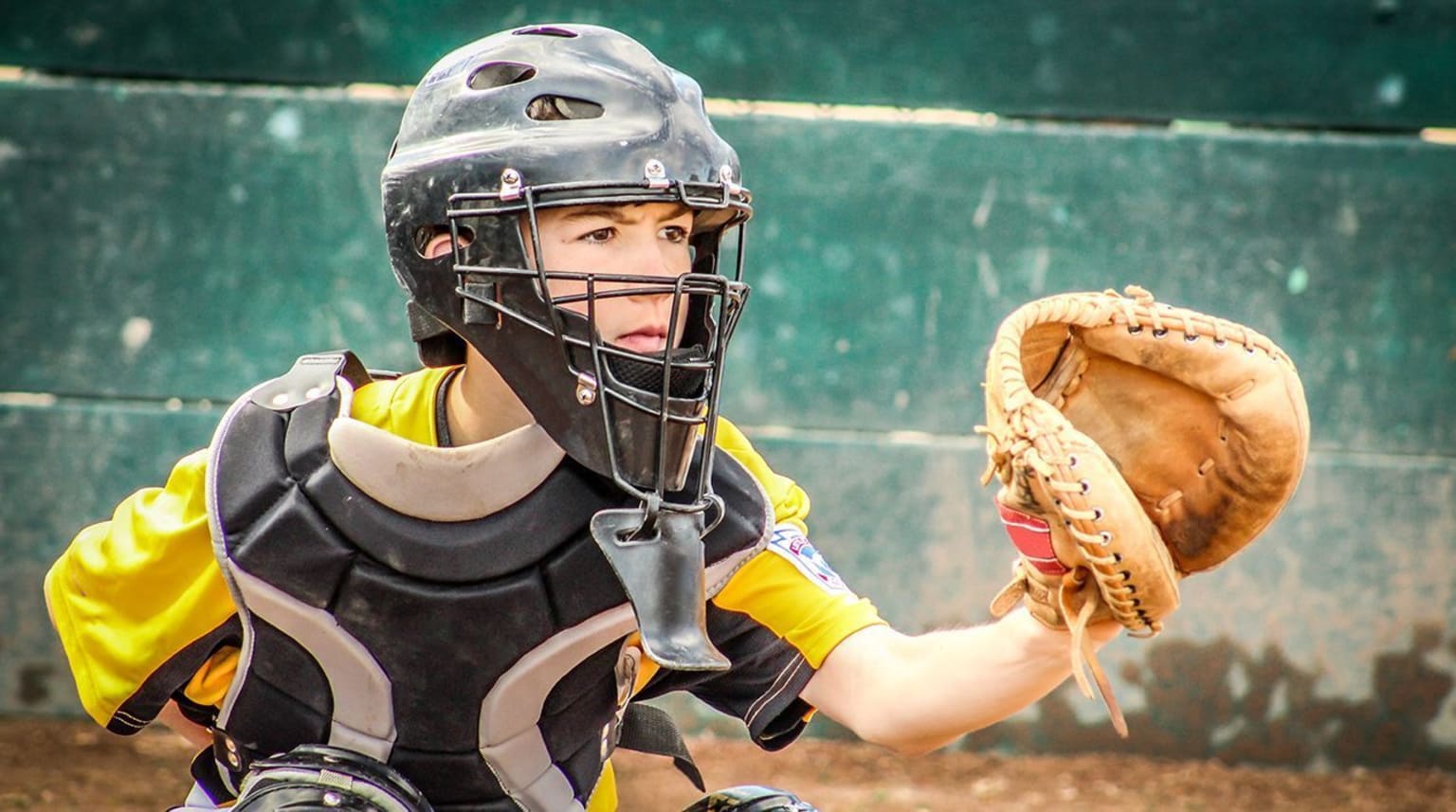3 Things All Catchers Must Know

Whether playing baseball or softball, the catcher is the field general because he, or she, has everything that happens on the field in front of them.
The catcher must be aware of all game situations, and needs to be ready to help direct the team. Over more than 25 years of coaching at the high school and collegiate levels, Dennis Sarow has identified three fundamentals for being an effective catcher.
He pointed out that catchers have many responsibilities and always have the ball in their hands, which is why they must develop these basic skills before considering making plays at the plate, or throwing out runners.
“You can’t throw (runners) out if you’re not stopping the ball,” said Mr. Sarow. “You can’t throw them out if you don’t know where they are.”
The primary skills Mr. Sarow suggests a catcher should master first are:
1. Stopping the Ball
Catchers tend to rely too much on their gloves, and need to learn to get their bodies in front of the ball.
“Catchers need to learn the proper way of blocking the ball,” he said. “Ironically, catchers tend to want to catch the ball with their glove. What they need to do is accept the fact that they need to catch it with their body. It’s about how they set up behind the plate and receive the pitch, no matter where it is.”
A good drill to practice this skill is using tennis balls. Bounce the tennis ball toward the catcher, slowly throwing wider and wider “pitches.” This forces the catcher to move out of a crouch and shift into an effective position to block a potential wild pitch, and smother a possible passed ball.
“A lot of catchers have a tendency to think they’re expected to use their glove to control a pitch, but with any kind of deflection, you’ve got to get your body in front of it and keep (the ball) in front of you,” he said. “Blocking the ball so that it stays in front and playable, keeps the runners closer to the bases.”
2. Communication Is Key
“Catchers have to learn how to use their voice back there,” said Mr. Sarow.
The catcher is the only player who starts a play in foul territory and has the perspective to survey the entire field. He/she must be aware of the base runners, and where the defense is set up. It is also the catcher’s responsibility to know the count and recognize the changing situations that come with each pitch. The situations and possible plays to be made are what need to be loudly and clearly communicated to the rest of her team.
“The catcher is the point person,” said Mr. Sarow. “They see everything. You’re the leader. You’re the one that handles the ball the most outside the pitcher.”
Mr. Sarow said he has stopped a practice or scrimmage if his catchers aren’t talking loudly enough. “I tell them, ‘Just pretend you’re yelling at your brother,’” he said. “If they don’t talk, I’ll go out there and stand in front of them until they do it.”
Mr. Sarow also makes sure catchers keep the communication going throughout the game, even when he/she is mentally and physically tired. Catchers must be focused on good communication at all times.
3. Know Your Pitcher
When a catcher and pitcher become familiar with each other, the catcher will be able to identify any problems a pitcher might be having, and talk he/she through them.
“An attentive catcher can read the pitcher, and be able to recognize problems,” he said. “The catcher can sense what’s not working by seeing the ball coming in a certain way. Then he/she can go to the mound and talk (to the pitcher) about it.”
The relationship between catcher and pitcher is built over time, and it is key so they can work together as a team. Receiving new pitchers in bullpen sessions and during practice will also help catchers expand their knowledge.
Mr. Sarow said there is no substitute for repetition and experience. Time, trust, and commitment are the best way to build these catcher skills.
From GameChanger and Tom Glave.